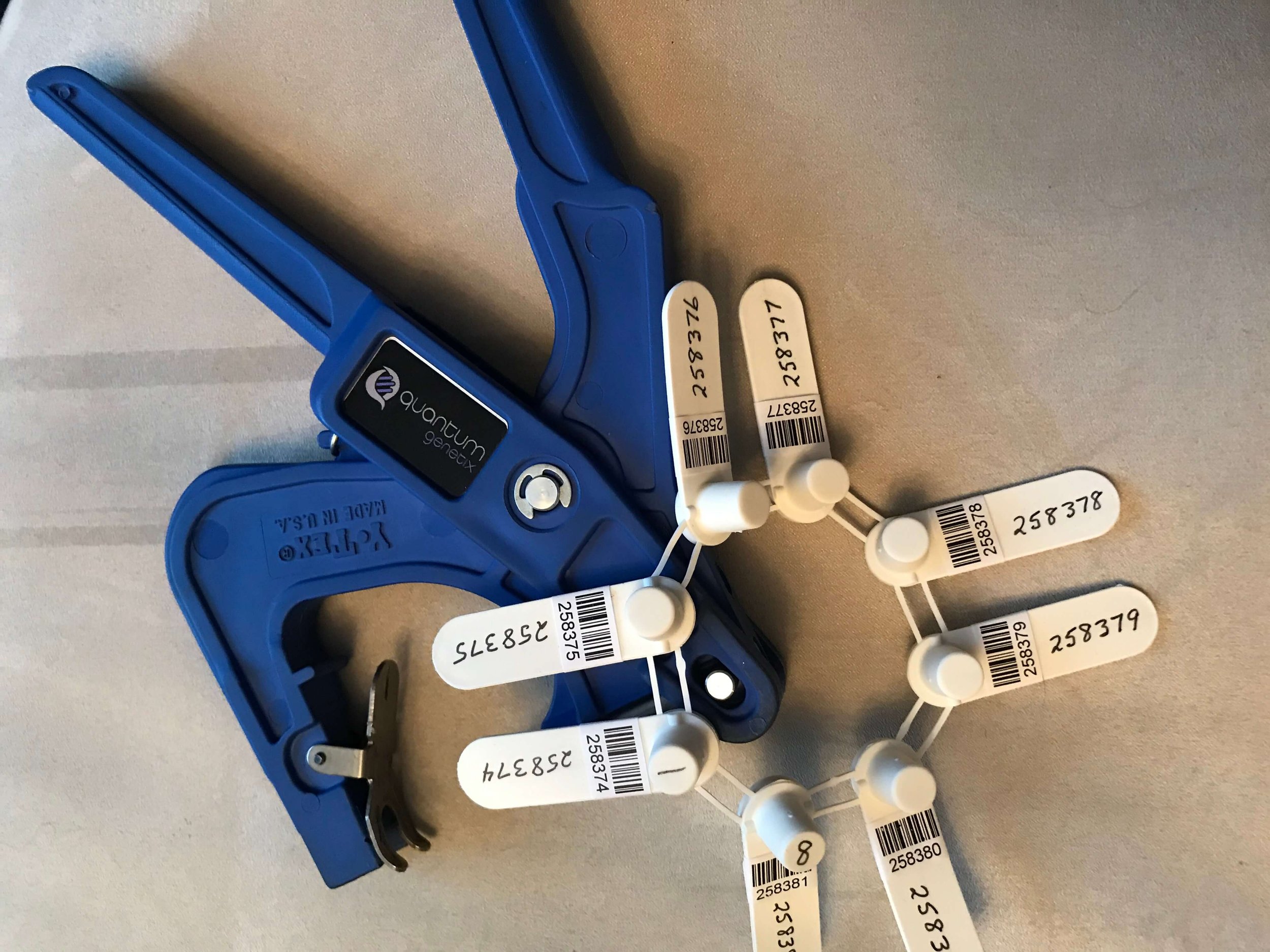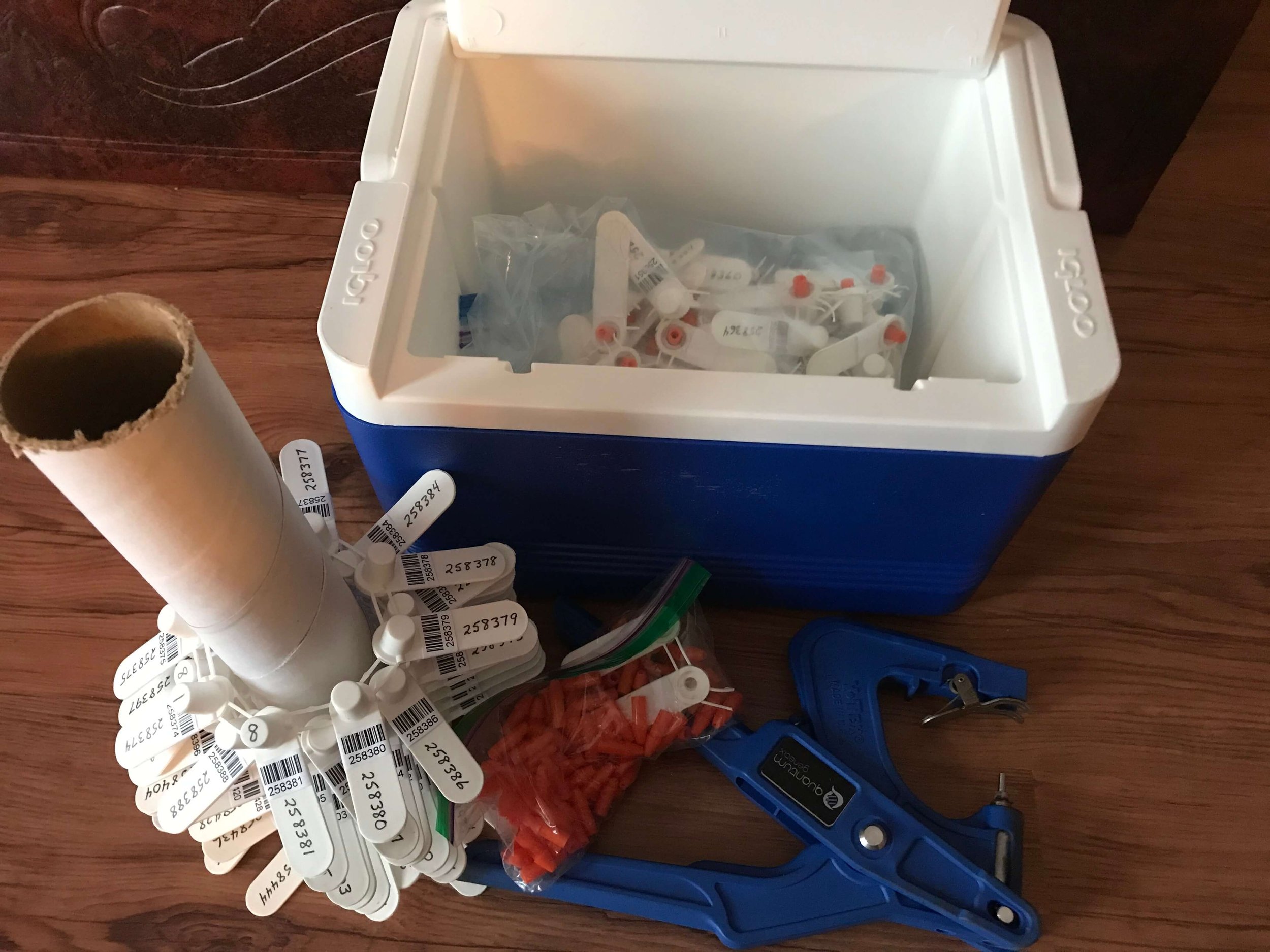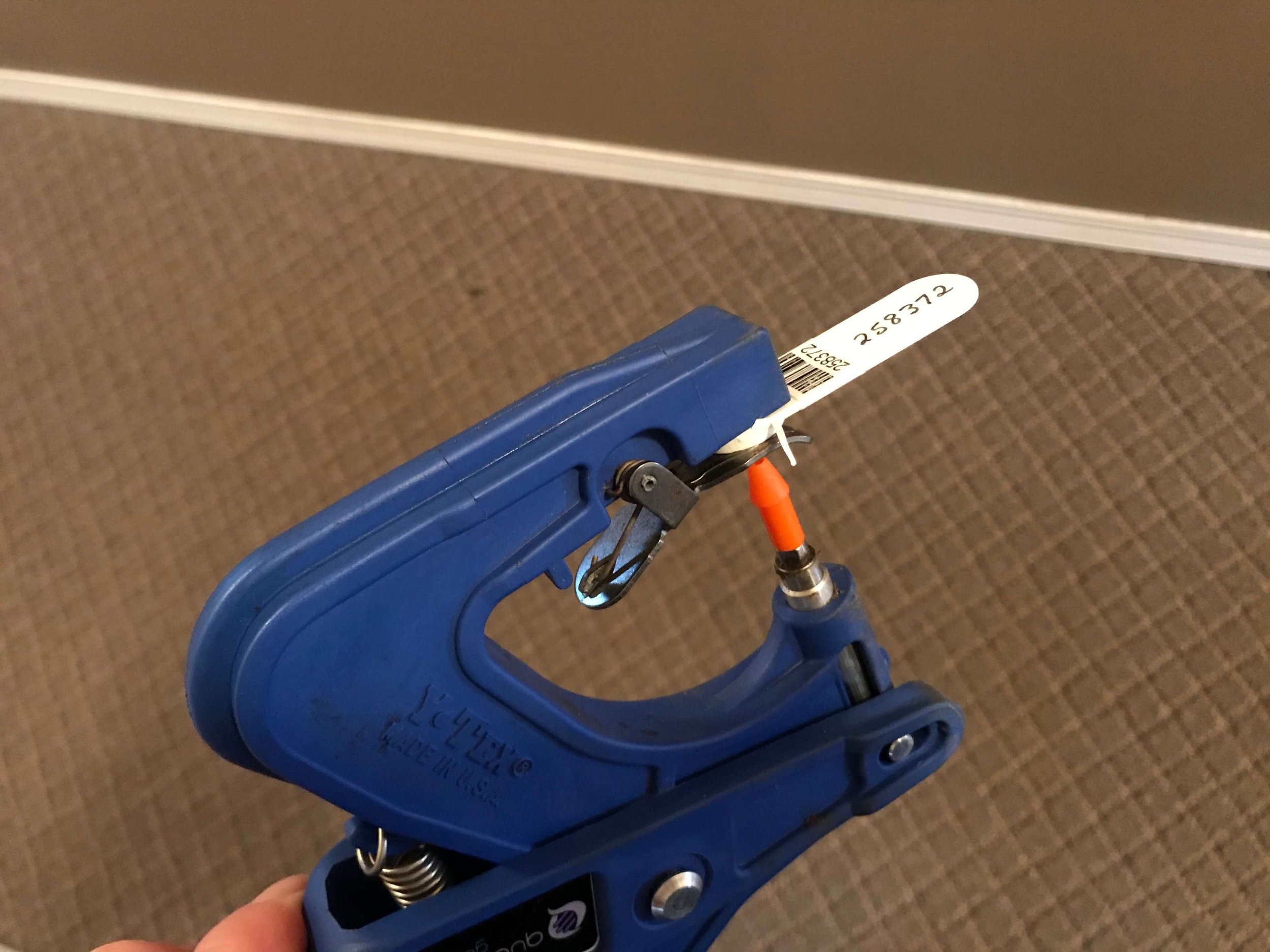Sire-Progeny Links In Multi-Sire Commercial Herds (2019)
Partners.
Overview.
One of the more commonly used natural breeding systems in commercial herds is the multi-sire system. One of the major disadvantages to this system, however, is that producers are often unaware of which bulls are siring calves. The use of genetic technology to assign parentage may allow producers to determine which bulls have sired calves.
The assumption in these systems is that each bull is breeding an equal number of cows. However, without identifying which bulls are siring calves, it is impossible to know with certainty if this is the case. The introduction of desirable genetic traits in commercial herds is typically achieved through purchase of bulls. By linking bulls to their offspring, producers can better evaluate if they are achieving the desired outcomes of their breeding plans in multi-sire herds.
This multi-year project will demonstrate the benefits of a systematic approach to breeding and how sire-progeny and other herd performance information can be used to generate measurable productivity and profitability improvements.
Project Details.
Beginning in 2019, seven herds will evaluate the use of the Q-link bull performance and herd improvement tool from Quantum Genetix. Five of these herds are producers in the west-central region of Alberta, one herd is associated with Lakeland College in Vermillion, AB and the remaining cooperator herd is located near Olds, AB (this cooperator is under the direction of Olds College).
Each year, producers are asked to provide a minimum of 100 calves (if possible) for parentage verification through DNA testing. All bulls involved in the project test groups must pass a yearly breeding soundness evaluation and test negative for venereal diseases. Additional production metrics, including weaning weights, are being collected to support economic analysis and further data interpretation.
2019 Summary.
32 sires and 343 calves were sampled for parentage verification within the five herds in the west-central region. Additional sires and calves were sampled within the remaining two herds.
*Note: one producer did not sample any calves in 2019 as their bull battery had changed significantly from the year before.
Sires were sampled through tail hair collection, while calves were sampled through ear tissue collection.
Weaning weights were collected for 2 of the 4 herds that collected DNA samples due to limitations in the handling systems of some cooperators.
For a more detailed description of 2019 activities please download the pdf below:
2019 Sire-Progeny Links Project Status Report
Additional Information
Quantum Genetix Ear Tissue Collection Procedure
Quantum Genetix Hair Collection Procedure
Media
Western Producer Article, November 2020
BIXS Press Release, November 2020








